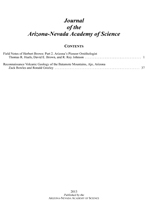Most fish use suction to capture prey, which is effective on a wide variety of items. However, it is ineffective on attached prey, which require a biting or scraping mode of food acquisition. Members of the Cyprinodontiformes, however, are unusual in that they use a biting mode of prey capture on water column prey. The swordtail, Xiphophorus helleri, is a member of this clade that feeds both in the water column and grazes on the benthos. We sought to determine if swordtails would modulate prey capture mechanics in response to varying food types and presentations. “Blood worms” (chironomid larvae) and brine shrimp served as prey of differing sizes that could be caught in the water column, presumably via differing levels of inertial suction. These were compared with commercial algae tabs that served as a benthic prey item, which should elicit biting or scraping. Prey capture was recorded using high-speed video at 250 frames per second. Sequences were analyzed frame by frame to track movement of the jaws during the feeding event. We found that when feeding in that water column, both maximum gape distance and maximum premaxillary protrusion were smaller than during bottom feeding. Bottom-feeding events were slower and more exaggerated, characteristic of scraping food capture.
How to translate text using browser tools
1 September 2014
Variation in Prey Capture Mechanics in the Swordtail, Xiphophorus helleri in Response to Food Type
Brandon Mackey,
Keaton Vanderploeg,
Lara A. Ferry
ACCESS THE FULL ARTICLE





